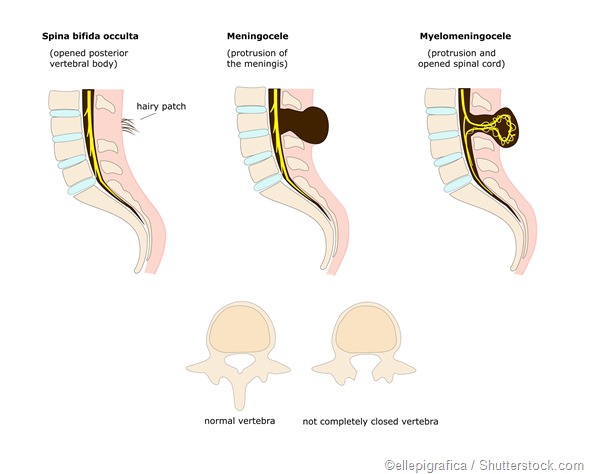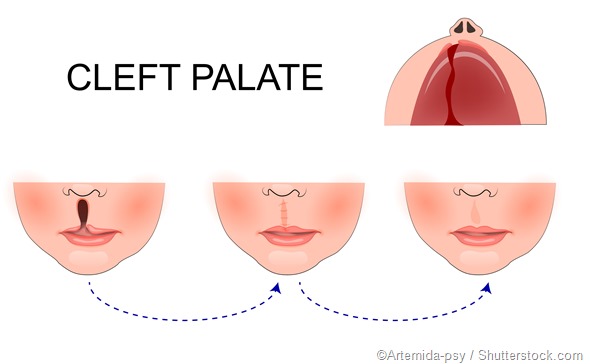Birth defects are problems which occur during fetal development in the womb. The problems can be either on the physical body or may affect the mental capabilities of the infant. Some birth defects develop in the first trimester of pregnancy, while others may arise during the last six months during organ formation. They can affect any part of the baby.
According to statistics collected by the health department, a baby with a birth defect is born every four and half minutes in the United States. While comprehensive data on global birth defects is unavailable, there are a large number of babies born with birth defects each year. It is important that parents are made aware of the risk of birth defects so that they can eliminate common causes.
What causes birth defects?
Babies can be born with defects which are relatively minor, such as extra fingers or toes, while others may be born with severe defects, such as a hole in the heart. The cause of the defect is not always readily identifiable, and there is usually a mix of factors which will influence the proper growth of the fetus within the womb. The health of the mother, the presence of a medical condition such as diabetes, or obesity can be causes for birth defects.
While genetics can cause some issues, most of the defects are usually caused by risky behavior during pregnancy. Addictive drugs, smoking, and drinking all have a detrimental effect on the fetus. Not taking prenatal care, lack of nutritious food, and even skipping vitamin and iron pills, can all lead to deficiencies in the mother. This in turn can translate into birth defects for the baby. So both genetic and environmental causes contribute to birth defects.
Common birth defects
The physically visible birth defects are the ones which are identified immediately - these could include extra appendages on feet and hands, a cleft lip, and spina bifida. In contrast, other defects may become more apparent as the child grows. They are usually identified when the child does not meet development milestones at appropriate ages. Birth defects that tend to be commonly seen include:
Zika Virus
This virus, which can be transmitted through a mosquito bite, blood transfusion or sexual contact, has been declared as a global public health emergency by the World Health Organization (WHO). If the virus is transmitted to a pregnant woman, the child may be born with a visibly smaller head size in proportion to the body. There is also a risk of brain damage that the WHO warns of.

Spina Bifida
This is a neural tube defect that affects the spinal column of the baby. The condition is not genetic or hereditary. It can be prevented by a pregnant woman having 400 micrograms of folic acid every day. The risk of this birth defect reduces by 70% by this simple measure. It is a common birth defect.

Cleft Lip or Cleft Palate
This is the fourth most common birth defect in children worldwide. It occurs if the separate parts of the face, which develop individually, do not join up properly. The severity of the defect can vary drastically. The cause is not yet identified. Surgical intervention is the usual cure for this birth defect.

Congenital Heart Disease
This is the most common birth defect - it affects nearly 1 in every 150 babies born. Many times the defects are so minimal that they do not get identified until the person is well into adulthood. The severity of this varies drastically from case to case, but the majority of birth defect related deaths are caused by congenital heart disease.
It can be caused due to a viral infection, medication, alcohol consumption, smoking, chronic illnesses of the mother, and genetic factors. They can be detected by sonography or ultrasounds. There are more than a dozen different types of heart conditions possible; therefore, treatment will depend on the condition.
Down Syndrome
This is one of the most common birth defects. 85% of those born with the defect do not survive their first year and 50% of the babies who live will not survive beyond 50 years. It is a genetic disease caused by Trisomy 21 where in an extra chromosome exists in either the sperm or the egg causing a fatal mutation. There is no cure and screening tests are the only way to avoid the disorder.
Living with birth defects
A lot of research is being conducted into birth defects and their treatments. Some cures have been identified, but for the majority of those born with limiting defects, life is never easy. Proper screening and diagnosis in the womb may allow some defects to be corrected before birth. With this said, the majority of treatments are done after birth. A good family support system combined with adequate medical attention is the best way to move forward.
References
- https://vsearch.nlm.nih.gov/vivisimo/cgi-bin/query-meta?v%3Aproject=medlineplus&v%3Asources=medlineplus-bundle&query=birth+defects&_ga=1.162838844.1474204042.1481905852
- http://kidshealth.org/en/parents/birth-defects.html
- http://americanpregnancy.org/birth-defects/
- http://americanpregnancy.org/birth-defects/spina-bifida/
- http://americanpregnancy.org/pregnancy-complications/zika-virus-and-pregnancy/
- http://americanpregnancy.org/birth-defects/down-syndrome/
- http://americanpregnancy.org/birth-defects/congenital-heart/
- http://americanpregnancy.org/birth-defects/cleft-lip-cleft-palate/
- http://www.cdc.gov/ncbddd/birthdefects/facts.html
Further Reading